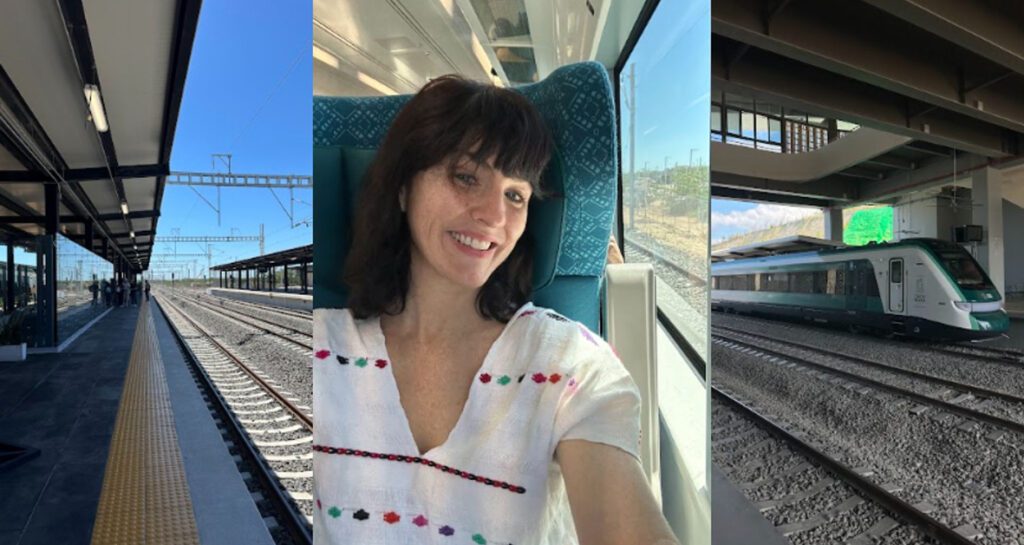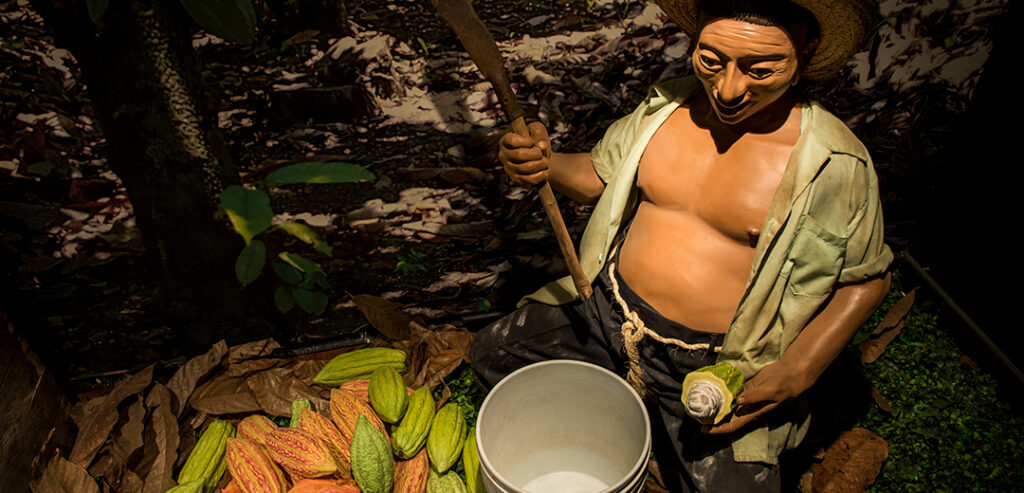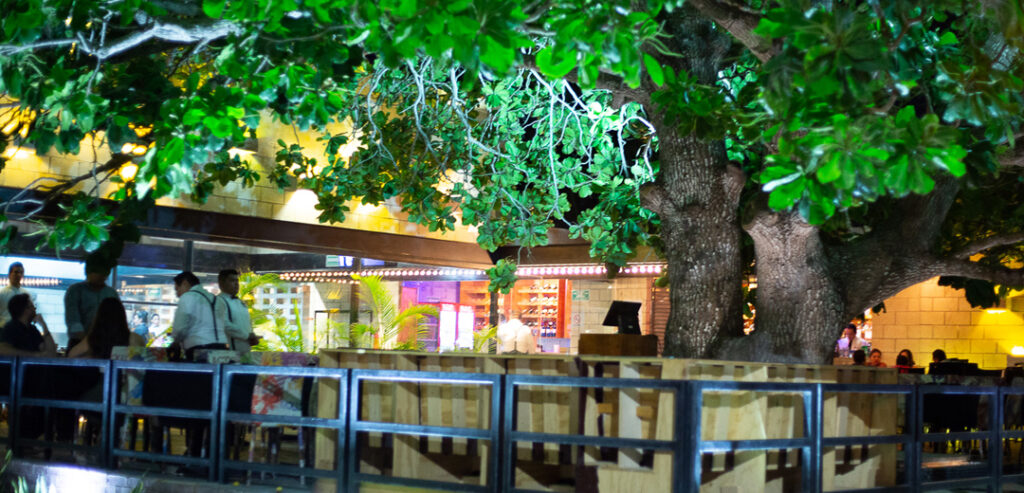I recently took a trip to Campeche, and for the sake of adventure—and research—I hopped aboard the now somewhat-mythical Tren Maya. Yes, that Tren Maya. The one surrounded by controversy, environmental debates, and political promises taller than a ceiba tree.
Look, I get the outrage. I really do. But now that it’s here and choo-chooing across the southeast, I figured I’d give it a try (twice!) and share my two centavos.
And honestly? I kind of like it. It’s sleek, it’s clean, it has that new train smell (you know the one), and it offers a unique way to see the Yucatecan countryside while pondering your life choices and eating overpriced chips.
The Bigger Picture (and some cautious optimism)
Talking to people from the local Maya communities, the mood is… let’s call it cautiously hopeful. The train has brought improvements: restored archaeological sites, better roads, new infrastructure, and actual public transportation for people moving between towns. It’s not just a tourist gimmick—locals are genuinely using it. So that’s something.
That said, most of the passengers I encountered were Mexican—some from Yucatán, some from Quintana Roo, and a few curious domestic tourists wanting to see what all the hype was about. (Spoiler alert: the hype involves a lot of waiting and a disappointing cup of coffee.)
The Pros:
- It’s shiny and new. Like, actually pleasant to ride.
- The countryside views are lovely—10/10 would stare out the window dramatically again.
- Security and boarding are well-organized. The military staff? The Tren Maya is run by the military and the federal government, which might sound a bit intimidating; however, all the military staff I encountered were friendly and helpful.
- Train stations have cafes, shops, and even little souvenir stands (because you can get your Tren Maya thermos!)
- In Mérida: The shuttle from La Plancha to the Teya station is around $45 pesos. Comfortable, smooth, and suitcase-friendly.
- I tried both First Class and Tourist Class. Difference? First Class has slightly more legroom and comes with a drink. I’ll let you decide if that’s worth the extra pesos.
- Trains (so far) have been on time.
- They have electricity outlets so you are covered to charge devices!
The Cons (oh, there are cons):
- It’s more expensive than ADO. Even for locals. So many people still prefer the bus, which takes you straight into the heart of town and doesn’t require you to navigate shuttle limbo.
- Foreign residents get charged double. Yes, even if you’ve lived here for years, pay taxes, speak fluent Spanish, and eat more chaya than your neighbor. If your passport isn’t Mexican, you’re charged like an international foreign tourist. That’s a lot of potential riders—and their visiting families—the Tren Maya is pushing away.
- The stations are all out of town. So factor in the extra cost and time to get where you’re going. In Mérida, for example, the shuttle leaves 45 minutes after the train arrives. Add another 30 minutes into the city, and you’ve just burned over an hour waiting to get to your destination.
- My Sunday return from Campeche took FOUR HOURS door-to-door. Two and a half hours on the train, 45-minute shuttle wait, 30-minute ride into Mérida. I left feeling not exactly restored and refreshed.
- The internet is pretty spotty—basically, you’ll only have connection at the stations in town. So come prepared: bring books, magazines, a journal, download your movies and music ahead of time, and get ready to go old-school and work offline.
- No food or drink allowed. Yep. Signs everywhere. Though enforcement is spotty at best, technically, you’re not supposed to bring snacks. There is a food car you can order from and the prices are affordable, but I know I like to bring my own food and drink as I do on airplanes, buses and the comfort of my own car. Speaking of which…
- Train coffee is an abomination. I beg you: don’t do it. Just… don’t. Bring your own thermos and pray no one sees it.
Final Thoughts:
The Tren Maya is a bit like a new romance—exciting, full of potential, but comes with baggage and a few red flags you can’t ignore. I really want to root for it. It’s a beautiful idea on paper, and if it truly delivers on the promise of sustainable development, regional connection, and opportunity for locals, it’ll be something we can all be proud of.
But until then, I’ll keep a snack in my bag, my expectations modest, and my coffee from literally anywhere else.



